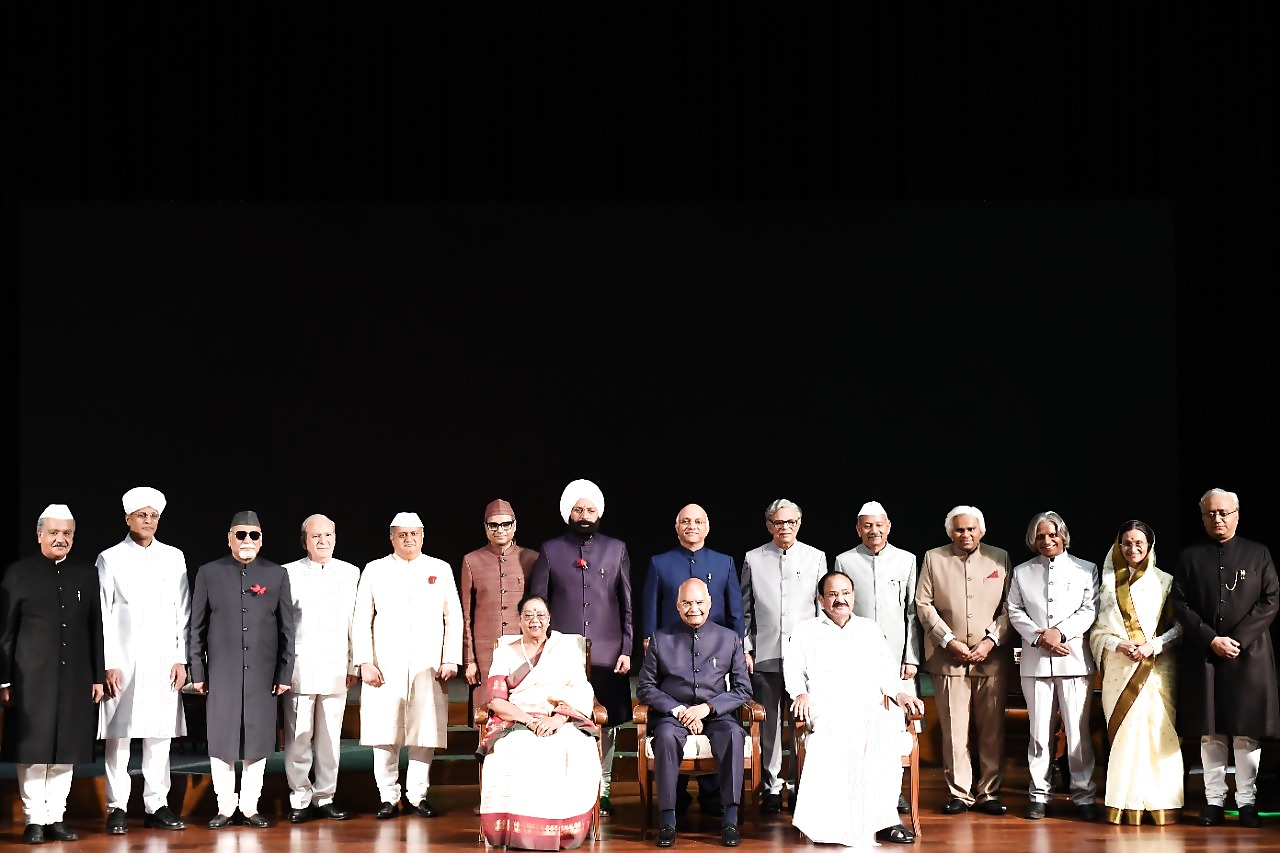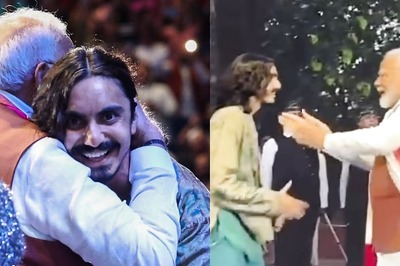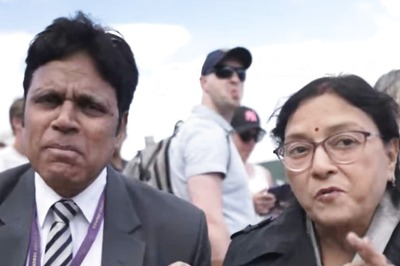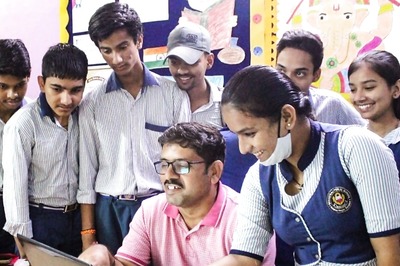
views
Once a symbol of British colonial rule in India, how this huge building developed by Sir Edwin Lutyens has for 75 years since Independence been witness to profound transformations and the characteristics of the 14 eminent persons who occupied the President’s post have been presented in a very engaging way by famous actor and director Manoj Joshi in his play “Rashtrapati Bhavan” that was staged in the Rashtrapati Bhavan Cultural Centre.
A production by famous actor Manoj Joshi
At a time when the country was discussing who its next president would be, a troupe of actors from Mumbai was busy staging a play at the Rashtrapati Bhavan Cultural Centre. It was led by Manoj Joshi, who has appeared in a number of Bollywood films, TV shows, and plays, and is famous for enacting the role of Chanakya. Joshi has not just tried to showcase the history of Rashtrapati Bhavan in an entertaining way, but he also provides glimpses of the lives and personalities of those 14 prominent Indians who have been presidents. After spending three months in research and a month of rehearsals, when more than 25 actors led by Joshi staged this 75-minute-long play at the RBCC, even President Ram Nath Kovind couldn’t restrain himself from applauding.
President Kovind witnessed the staging of ‘Rashtrapati Bhavan’

Among those who enjoyed this entertaining play were Vice President M Venkaiah Naidu, the governors of various states, and many central ministers. When the show was over, both the President and the Vice President went up to the stage to congratulate the artistes and got themselves photographed with them. Those on stage also included the actors who had portrayed the 14 presidents, right from Dr Rajendra Prasad to Ram Nath Kovind.
Manoj Joshi researched for 3 months to create the play
The President’s press secretary Ajay Singh and Bollywood actor Manoj Joshi are old friends. One day while talking, they formulated a plan to stage a play to showcase the history of the Rashtrapati Bhavan in a captivating way. Even President Kovind liked the idea and after that work started on the scripting and designing of the production. Manoj Joshi visited the Rashtrapati Bhavan several times to get a good look at the architecture and many historical documents in an attempt to prepare an adequate script to present the history of this most famous building in the country in a fun and lucid manner.
The play peeks into the mind of Sir Edwin Lutyens
Manoj Joshi did not just spend time exploring the history of the Rashtrapati Bhavan, he also studied the tenures and personalities of all those who occupied the highest constitutional seat in the country. Not only this, but Joshi also diligently researched the thinking of the architect of the “Viceroy’s House”, Edwin Lutyens, who did not have much love for Indian art and history but was inspired by his theosophist wife to include influences from the structures of the Sanchi Stupa as well as Hindu and Jain temples while designing the building. The play opens with the preliminary thoughts of Lutyens, considered the foremost exponent of modern British architecture.
Reddy blocked Attenborough’s Rashtrapati Bhavan shoot
Manoj Joshi is not just the narrator of the play but he also interacts with every actor who enacts the role of a president. The production brings to life 75 years of history and offers glimpses of the personalities of Rajendra Prasad to Ram Nath Kovind. The play also serves up interesting nuggets of information. For instance, how the then President Neelam Sanjiva Reddy disallowed famous Hollywood director Richard Attenborough from shooting in the Rashtrapati Bhavan for his film “Gandhi”; how could the dignity of this grand building that has been a witness to many historical events be risked!
The play spotlights the life of each President
The play also showcases the simplicity of India’s first President, “Deshratna” Dr Rajendra Prasad, who was aware of the challenges the country was facing and would spend 12 hours a day disposing of his official work despite his ill health. The second President, Dr S Radhakrishnan, who was more immersed in academia than in politics, and was famous all over the world for his work in the field of Indian philosophy, managed great upheavals in quick succession – from the Sino-Indian war to the complications emerging due to the deaths of the first two prime ministers, Jawaharlal Nehru and Lal Bahadur Shastri, while in office. Zakir Husain’s anguish has also been highlighted in the drama, who was pained to see his countrymen suffering due to increased inflation and heavy food crisis and died in the Rashtrapati Bhavan while the nation was still struggling to get over these challenges.
Fakhruddin Ali Ahmed was good at sports
VV Giri, who was not the official presidential candidate of the Congress party, won the polls as he was favoured by Prime Minister Indira Gandhi and learnt key lessons of politics during his election. Giri became renowned the world over not just as President but also as a champion of labour rights. The play also reveals that Fakhruddin Ali Ahmed, who is mostly known for signing the declaration of Emergency, was adept at many sports and would be out on the sporting field in his free time. He took great interest in golf, football, tennis, and cricket. He could be often spotted playing golf on the Rashtrapati Bhavan campus. After he died, he was laid to rest in Delhi, near the Rashtrapati Bhavan.
Rashtrapati Bhavan is witness to Gianiji’s rustic ways
Neelam Sanjiva Reddy, who became president during the Janata Party government, was not in favour of the Rashtrapati Bhavan being used as a film set, even if the director-producer was someone world-renowned like Richard Attenborough. Giani Zail Singh was a rustic personality from rural Punjab. He used to have his lunch while sitting on the lawns of the Rashtrapati Bhavan and loved to converse in Punjabi.
Shankar Dayal Sharma was honoured by his student
As President, R Venkataraman saw many Prime Ministers come and go with abbreviated tenures. Despite having to face difficult constitutional problems, he still took much interest in keeping the Mughal Gardens in good shape and got many local flowers and fruits added to the flora. Dr Shankar Dayal Sharma enjoyed admiration as President but during an official visit to the Gulf, the head of a state there accorded him great honour as Dr Sharma had been his teacher. This ruler was Oman’s Sultan Qaboos bin Said, who had been Dr Sharma’s student in Pune.
Kalam’s simplicity was the talk of the town
The “Rashtrapati Bhavan” play also portrays how President KR Narayanan could immerse himself into the world of English literature aside from handling the responsibilities of the constitutional head of the country. But the most fascinating aspect is a peek at the personality of APJ Abdul Kalam who arrived at the Rashtrapati Bhavan with a suitcase and his books and left with one suitcase, could be seen conversing with people like a college professor on the subject of education and about the future of the country during the day, and would be immersed in music during his spare time.
Pratibha Patil drew attention by riding a fighter plane
Being the first woman president of the country, Pratibha Devisingh Patil enjoys a special place, as showcased in this play. She had no hesitation in getting into a fighter jet while most people around her were loath to advise this to a woman. But Pratibhatai also knew that as the constitutional head of the country, and supreme commander of the armed forces, she had to deliver a message. With her exemplary courage, she encouraged the soldiers of the country and wanted to tell women that they were not inferior to men in any way.
The personalities of Pranabda and present President Kovind
Pranab Mukherjee’s calm and reserved demeanour is also depicted in the play. Pranabda had no hesitation in rejecting the mercy petitions of the terrorists and their associates who had taken the lives of many innocent citizens of the country. The play also spotlights the life of present President Ram Nath Kovind. Kovind, who was born in Paraukh village near Kanpur, is the first Dalit President of the country and is well known for his simplicity. His personality is exemplified by how he invited to the Rashtrapati Bhavan and honoured those who did admirable work during the Covid pandemic. As the constitutional head of the country, he did not shy away from extending gratitude on behalf of the nation to those who served its people during some of its most difficult times.
An unforgettable experience for the participants
The 75-minute play has a taut script and its cast comprises some of the finest artistes from Gujarati, Parsi, and Hindi films as well as theatre. They came all the way from Mumbai to Delhi for a month to rehearse and act in this play without pay and put up a production that showcased the history of the Rashtrapati Bhavan and its famous residents in a commendable manner that has been applauded by President Ram Nath Kovind and other dignitaries. It is not every day that one gets the opportunity to enact a play related to the glory of the Rashtrapati Bhavan on the premises of the Rashtrapati Bhavan itself. This is an experience that Manoj Joshi and other members of the cast and crew will cherish forever.
Read all the Latest News, Breaking News, watch Top Videos and Live TV here.




















Comments
0 comment